Jump to the Recipe
The first time I tried my hand at making mayonnaise, it was because I’d run out. I was too lazy to go to the supermarket to get another jar.
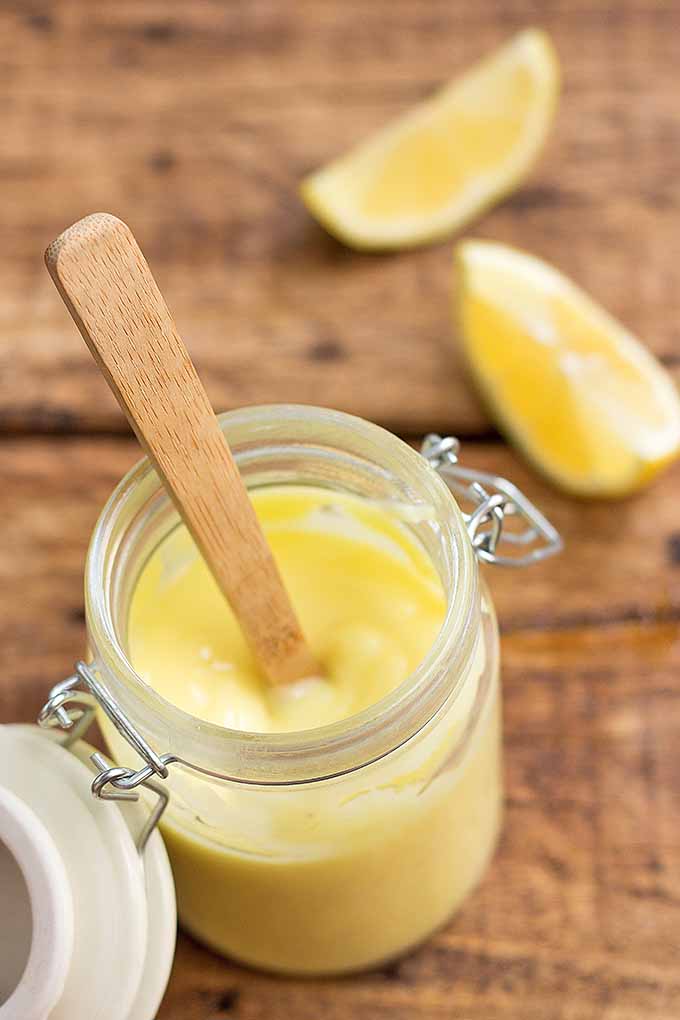
Since the homemade version only required egg yolks, neutral-flavored oil, mustard powder, salt, and lemon juice – all of which I happened to have in my kitchen already – I decided to give it a shot.
In fact, while it may sound like quite a feat to make your own mayo, it’s actually pretty simple. All you need is a few ingredients, a bit of muscle, and a whisk.
Oh, and of course, patience.
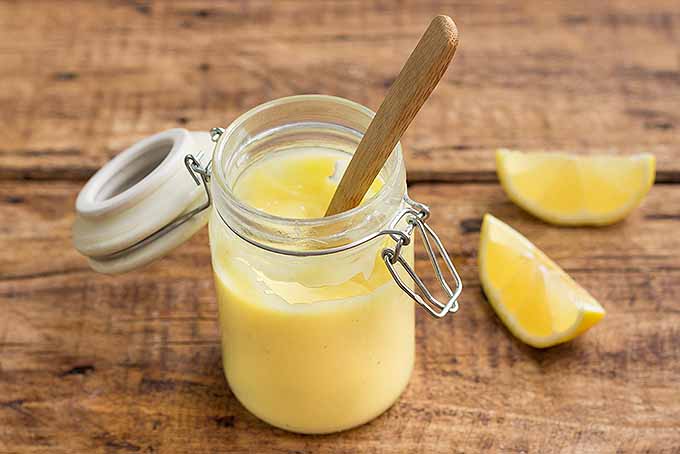
The thing about mayonnaise is that it’s an emulsification between the oil and the other ingredients. And the trick lies in drizzling in the oil very, very slowly, a bit at a time, until the you see that the mixture has started to bind.
That’s why I emphasize being patient. If you try to rush things and pour too quickly, the mayonnaise will break.
But don’t worry! There are troubleshooting tips for that.
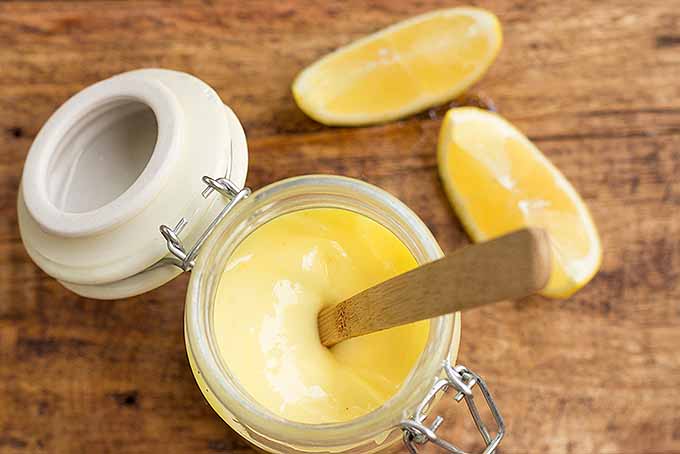
Otherwise, if you keep whisking continuously while you slowly drizzle in the oil, your emulsion will form – slowly but surely.
While it will take time and your arm will get tired, trust me when I say that the homemade stuff is definitely worth every ounce of effort. It has none of the additives or preservatives that you’ll find in the premade, shelf-stable variety that you find on the shelf at the grocery store – and it’s full of flavor!
The Recipe
- 2 egg yolks
- 2 tablespoons fresh lemon juice
- 1/2 teaspoon salt
- 1/2 teaspoon dry mustard powder
- 1 cup neutral-flavored oil (such as canola or sunflower)
- Place the egg yolks, lemon juice, salt, and dry mustard powder in a large mixing bowl. Whisk the ingredients together to combine.
- Add a teaspoon of oil, then whisk for 15 seconds before adding another teaspoon and whisking some more. Go slowly – if you add too much at once you will break the mayonnaise.
- Repeat until the mixture has emulsified into a thick, smooth, and creamy sauce.
Nutritional Information*
Cooking by the Numbers…
Step 1 – Mise en Place: Set out Your Ingredients
Measure out the necessary amounts of mustard powder, salt, and oil.
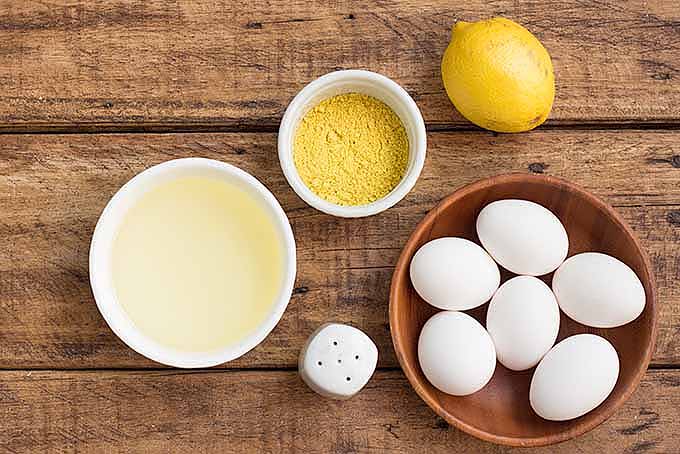
Set out the eggs and a lemon. I like to roll it on the countertop before slicing, to make juicing a little easier.
Step 2 – Separate the Yolks
Separate the egg yolks from the egg whites. Beat the egg yolks.
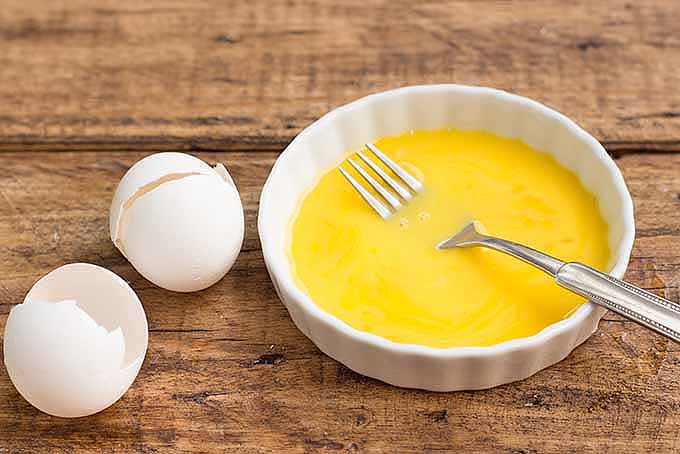
You can save the white for another use, like making an omelette or crisp and airy meringue cookies.
Step 3 – Squeeze the Juice
Squeeze the lemon to get fresh juice, making sure to strain as you squeeze to remove all of the seeds.
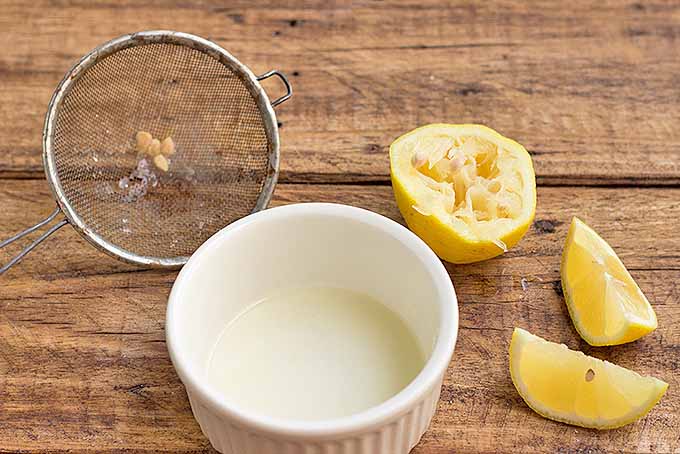
Step 4 – Combine the Ingredients
Place the eggs yolks, lemon juice, salt, and dry mustard powder in a large mixing bowl.
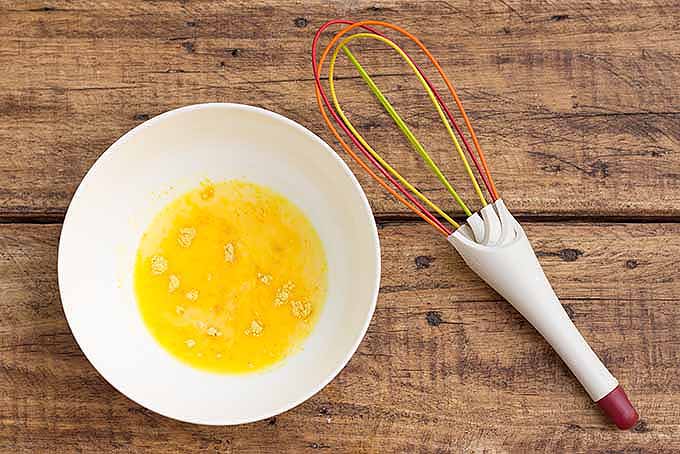
Use a whisk to combine the ingredients together.
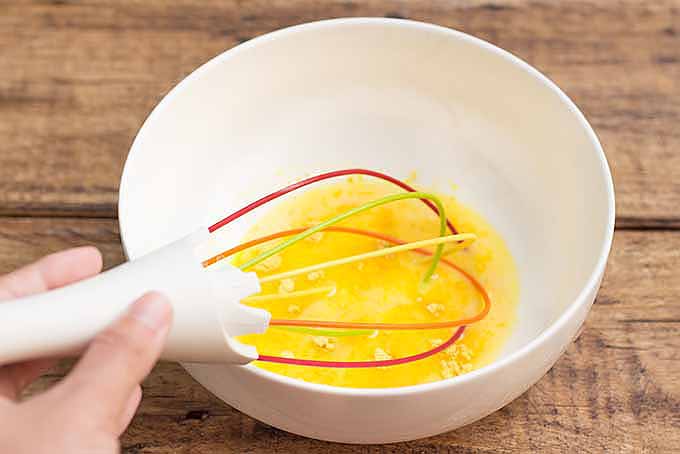
Step 5 – Drizzle and Whisk
Be sure to add the oil very slowly, starting with one teaspoon at a time. I like to drizzle it into the bowl in a thin stream while whisking constantly, and continuing to whisk for about fifteen sections until fully incorporated before adding some more.
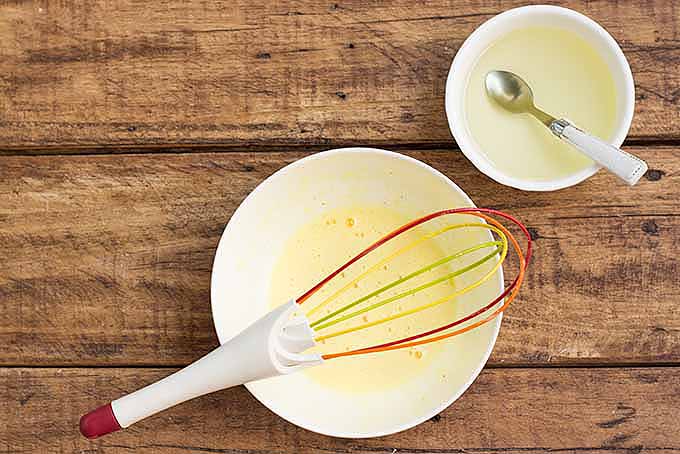
Mayonnaise is an emulsion, basically a smooth mixture of liquids that might not easily want to blend with each other without the addition of an emulsifier – in this case, lecithin, which is found in the egg yolks.
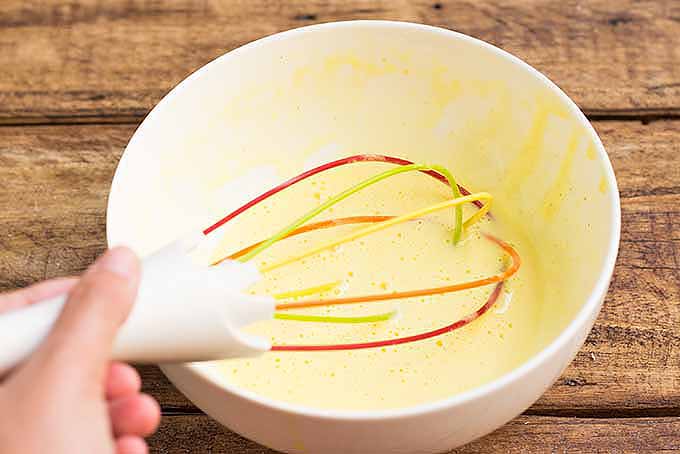
The lecithin is attracted to both oil and water, allowing the ingredients in your mayo to blend beautifully – unless you rush the process, causing your mayonnaise to “break” or curdle.
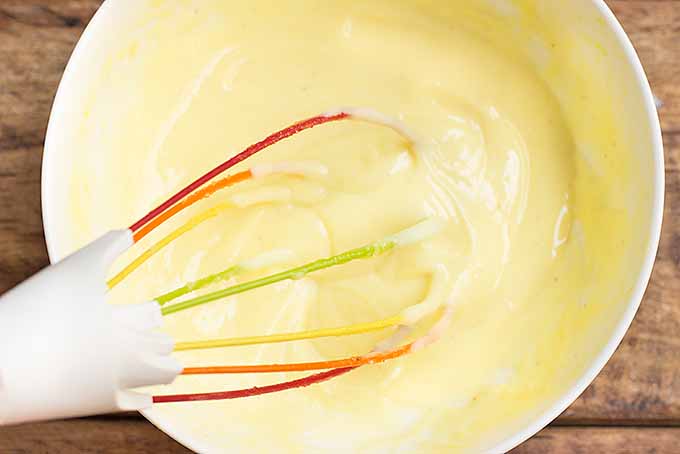
Repeat until you see that the mixture has emulsified into a thick, smooth, and creamy spread. You do not need to use all of the oil, just enough to achieve a mixture with your desired consistency.
Step Six – Fill and Serve or Store
Transfer into a clean, sterilized jar and cap it tight. Spread on sandwiches, stir into dressings and salads, slather on sweet corn before sprinkling it with cheese and chili pepper.
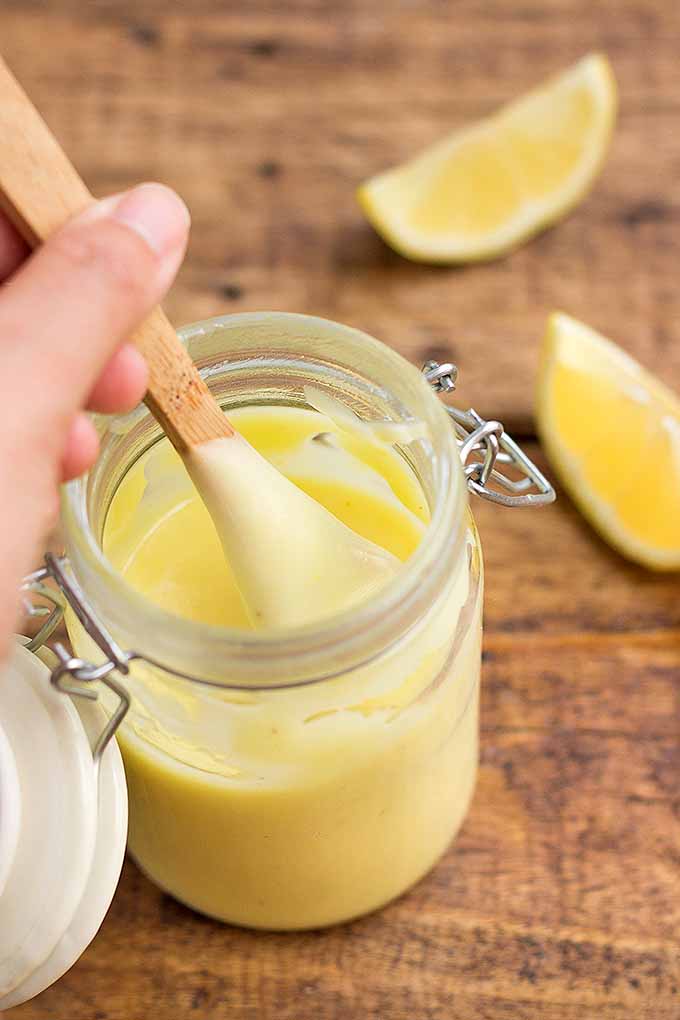
Homemade mayo may be stored in the refrigerator for up to one week.
Homemade for the Win!
After seeing how simple and quick it is to make right in your own kitchen, and tasting its rich, full flavor, there’s really no reason to buy the store-bought packaged kind anymore.
Simply whip up a jar or two of this homemade version once a week or as needed, and you’ll never go back to buying it again!
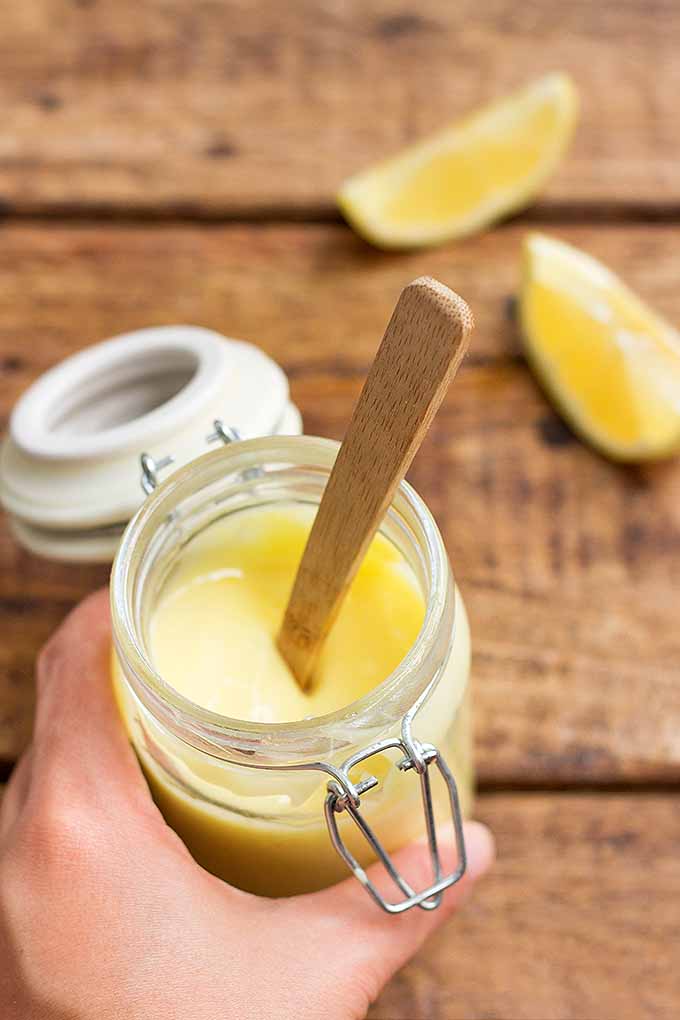
Have you tried making your own mayonnaise before? What other flavor combinations have you used? Share your experiences in the comments below!
Don’t forget to Pin It!
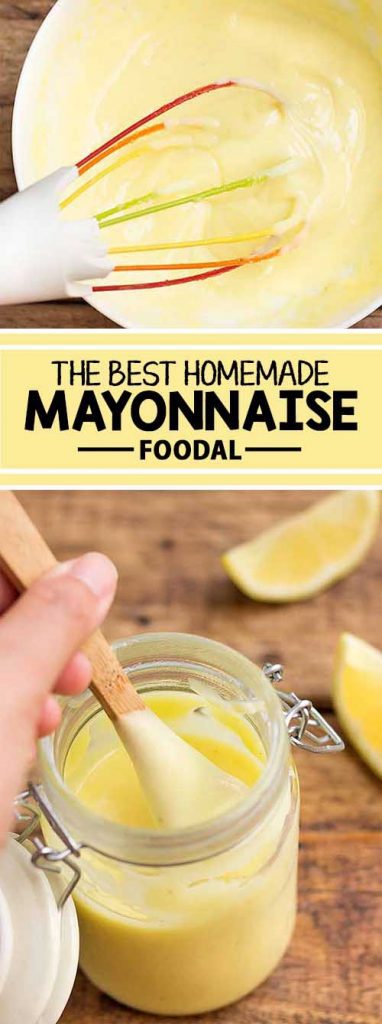
Photos by Felicia Lim, © Ask the Experts, LLC. ALL RIGHTS RESERVED. See our TOS for more details.
*Nutritional information derived from a database of known generic and branded foods and ingredients and was not compiled by a registered dietitian or submitted for lab testing. It should be viewed as an approximation.
About Felicia Lim
Felicia Lim is a Singaporean who moved to Argentina for love. Based in Buenos Aires, also known as “the Paris of South America,” she fills her days with freelance writing, recipe development, and food photography – three passions that give her endless joy. When she isn’t typing away at her computer, cooking in the kitchen, or shooting in her balcony-studio, you can probably find her curled up on the couch, lost in the pages of a good book.

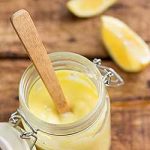
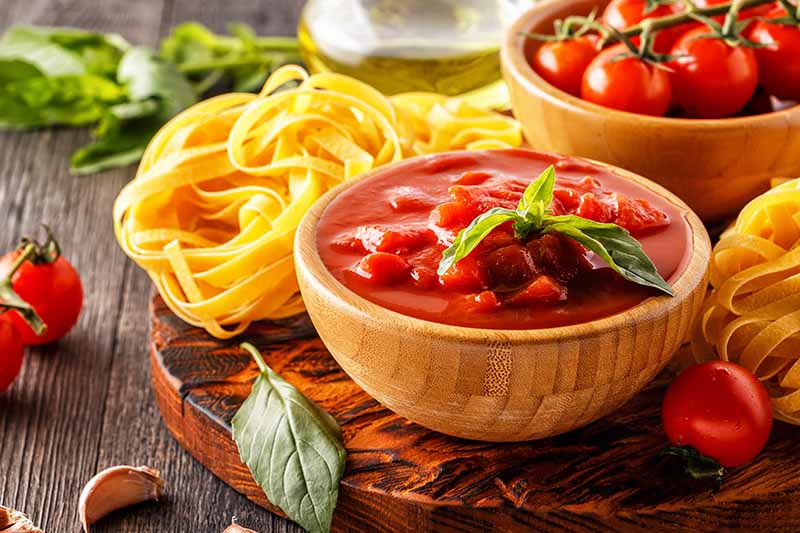

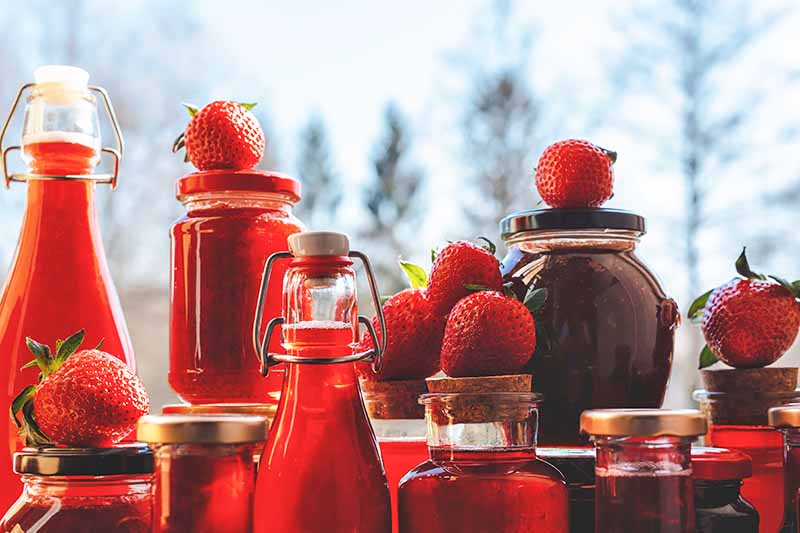
Couple questions. Does the mustard do anything other than add flavor? Second, could I use and electric whisk attachment for my hand mixer instead of hand whisking and achieve the same result? With only pictures of a whisk, it is virtually impossible to know how fast one should whisk the ingredients. A video would be helpful.
I’ve made mayo with my immersion blender, but want a thicker result.
Thank you.
The easiest way to make homemade mayo is to use an immersion (stick) blender in a narrow container. Whips up thick in seconds.